Winners of the Close-up Photographer of the Year 2023 competition (27 photos)
The winners of the fifth annual Close-up Photographer of the Year competition have been announced. The competition received almost 12,000 applications from 67 countries. The winners and the best photographs were determined by a jury consisting of 23 photographers, scientists, naturalists, journalists and photo editors. 
The main prize was awarded to Hungarian photographer Csaba Daroczy. His striking black and white photograph of a flying Eurasian nuthatch was taken with a camera hidden in a hollow tree. Darotsi not only became the overall winner, but also won in three more categories: “Butterflies and Dragonflies”, “Animals” and “Intimate Landscapes”.
The youth competition was won by 17-year-old Spanish photographer Carlos Perez Naval. The judges were drawn to his photograph of a Moorish gecko climbing a wall.
Below you'll find these and some more incredible close-up, macro, and micro photography as we highlight our favorite winners and finalists in all 11 categories.
“Forest Bird”, Csaba Daroczy (Hungary). Animals: 1st place and overall winner 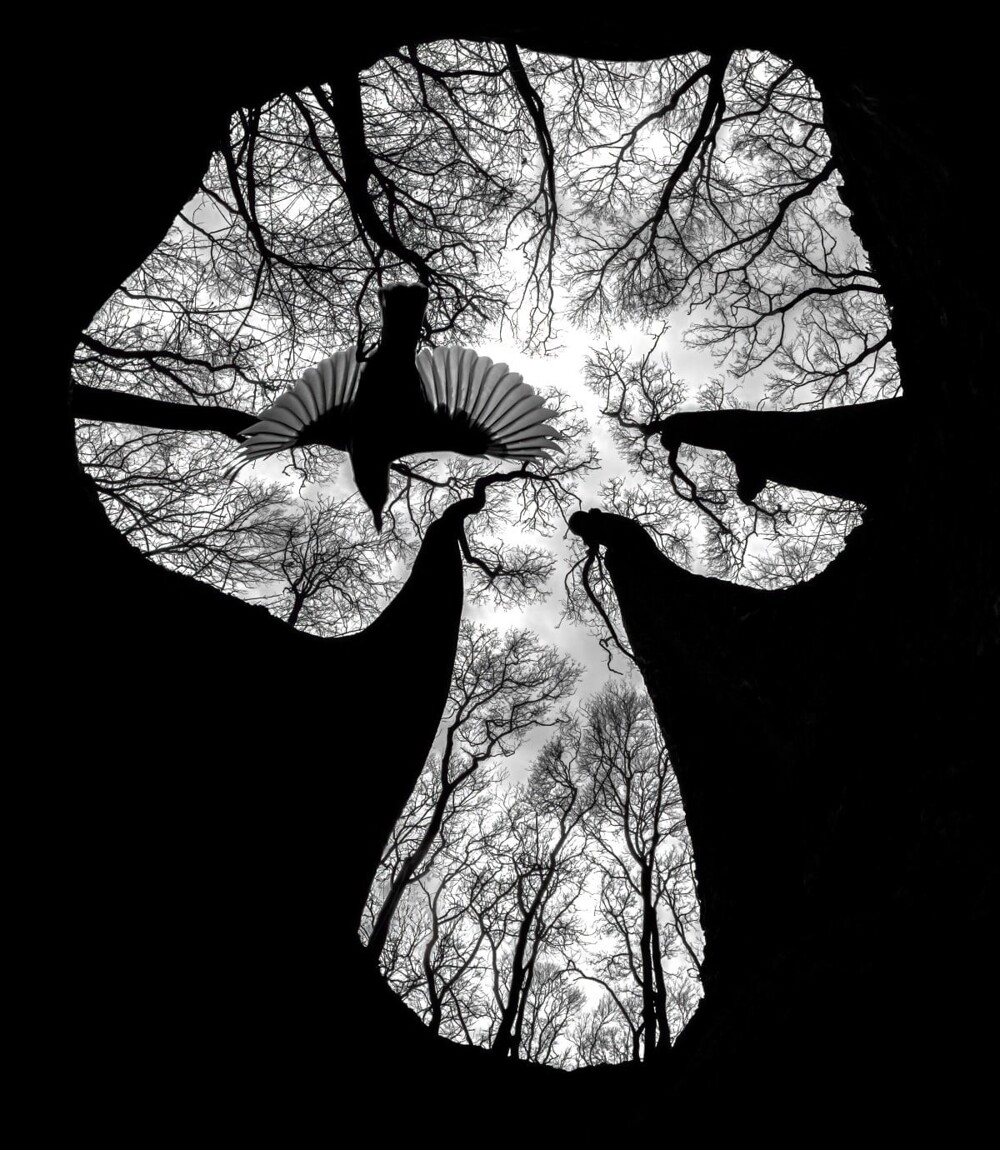
“In the winter of 2023, I took many photographs in the forest near my home in Hungary. Almost every week I found something new to photograph and spent several days exploring ideas and perfecting techniques. Curiosity and open-mindedness led me to this hollowed-out stump, which was about half a meter in diameter. I carefully placed the GoPro 11 camera in it and took a few pictures. The results amazed me. However, after a few days I decided that the composition could be improved if I included an animal in the frame. So, I returned to the place and placed a sunflower near the hole, which was soon found by mice and birds.”
“Small Miracles”, Carlos Perez Naval (Spain). Young Photographer of the Year 
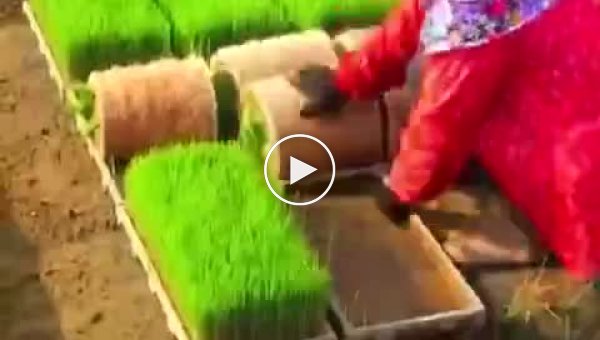
“In the walls of some houses in Calamoche, the village in Spain where I live, you can find pyrolusite. These magnesium minerals create stunning formations that look like petrified wood, but they are so small that they are difficult to detect. I was once lucky enough to find a Moorish gecko (Tarentola mauritanica) very close to a pyrolusite wall, so I made the most of the encounter. I've been wanting to catch a petrified forest gecko for a long time, but they only recently appeared in my village (probably brought in fruit baskets from hotter places). Thanks to climate change, they can now survive here.”
“Reflection”, Ria Bloemendaal (Netherlands). Plants: 1st place
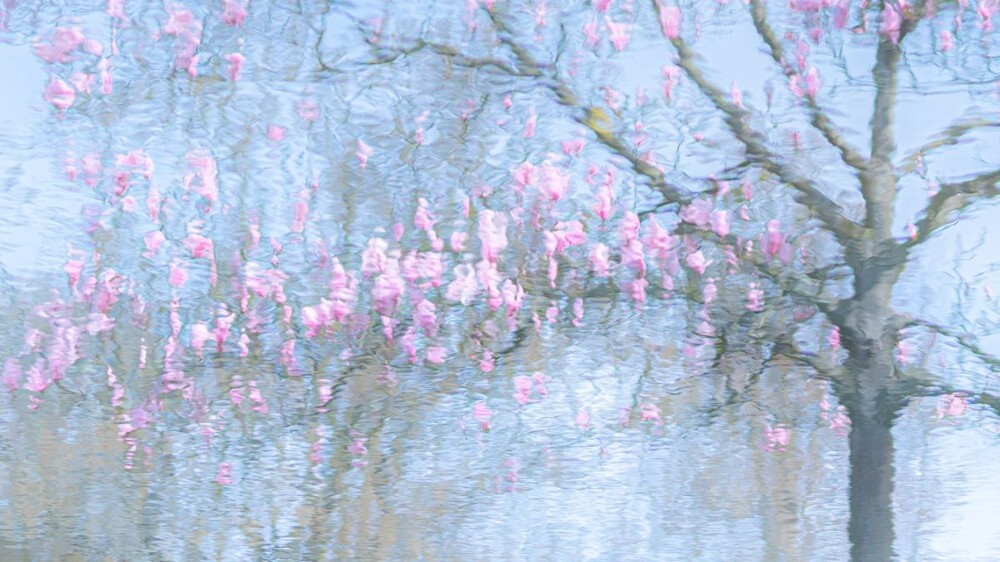
“At the Trompenburg Botanical Garden in Rotterdam, I saw this beautiful reflection in the water and it immediately inspired me to create an “impressionist painting.”
“Pinkaboo”, Chris Gag (USA). Underwater World: 3rd place

“For years I have wanted to create a relatively simple image of a goldfish damselfish against the backdrop of Red Sea coral. But something always didn’t work out - sometimes with corals, sometimes with fish... Therefore, when I discovered this little pearl against the backdrop of horny (gorgonian) corals, I had to pull my consciousness out of its ossification and realize that these corals are of a different species too great for shooting. As a traditional fisheye lens, water contact optics have changed the game in underwater wide-angle photography. Using Nauticam's revolutionary WACP-1 lens/port allowed me to use a medium zoom and create a wide-angle view at close range."
“Fighting in the Dunes”, Viktor Tyakht (Russia). Animals: 2nd place
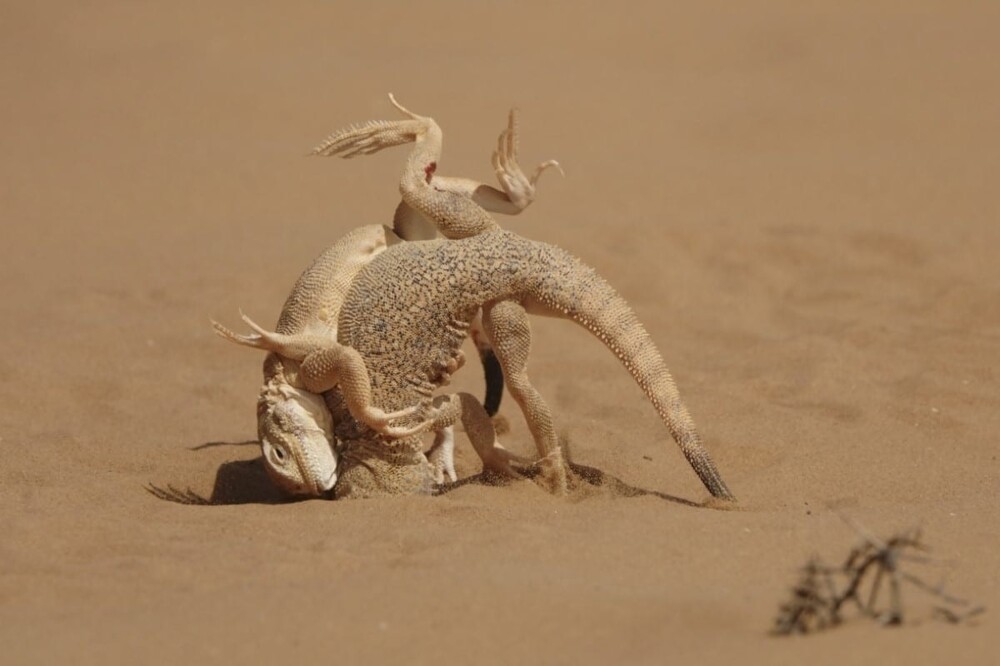
“I visited this small dune in the Kalmyk semi-desert in different months over several years. Each visit added new information about the most interesting local residents, the toad-headed agamas. I observed their mating behavior, building new burrows, hunting insects, and territorial conflicts. It was these battles in defense of their territory that were the most exciting spectacle. The whole ritual with initial “negotiations” with the help of various movements of the tail, demonstration of intimidating poses and a preliminary warlike dance culminated in a tough fight. This is one of those moments of wrestling in which the little lizards look like wrestlers in the ring.”
"It's sleepy timein", Simon Theuma (Australia). Underwater world: 1st place
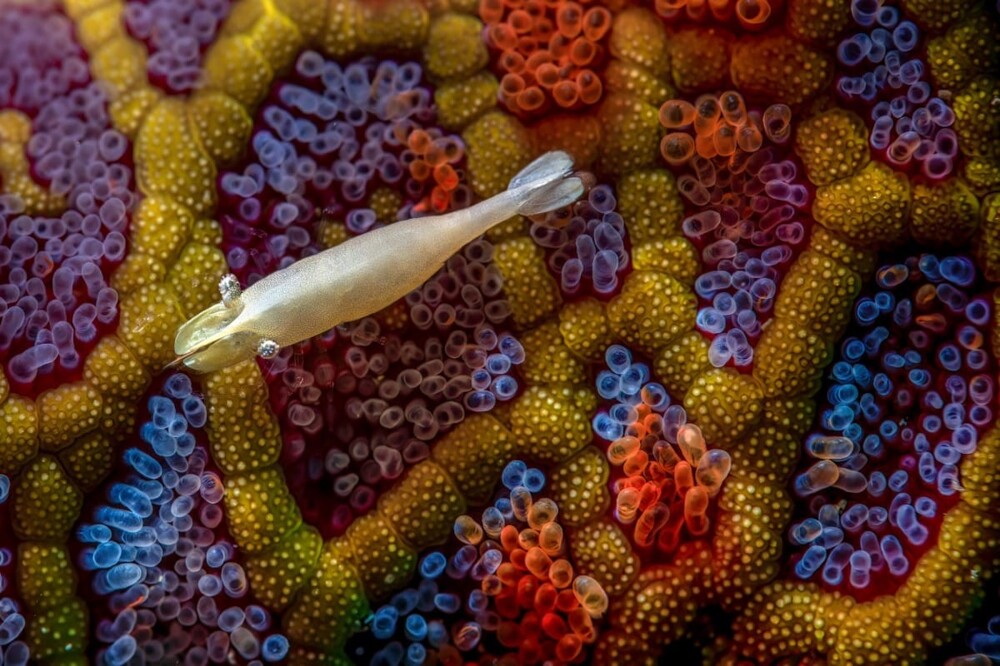
“Like an intricate tapestry of a marine ecosystem, this image captures the relationship between the anemone shrimp and the mosaic starfish. Australian Aboriginal culture and philosophy The Dreamtime reminds us of the delicate balance that exists in the great tapestry of our natural world - this ancient wisdom serves as an important reminder of how to preserve what we have. To take this photo, I had to use a strobe light set at an acute angle to the subject. This made it possible to highlight the depth and beautiful texture of two living organisms.”
“Beach Grass”, Gerhard Vlczek (Austria). Microworld: 1st place
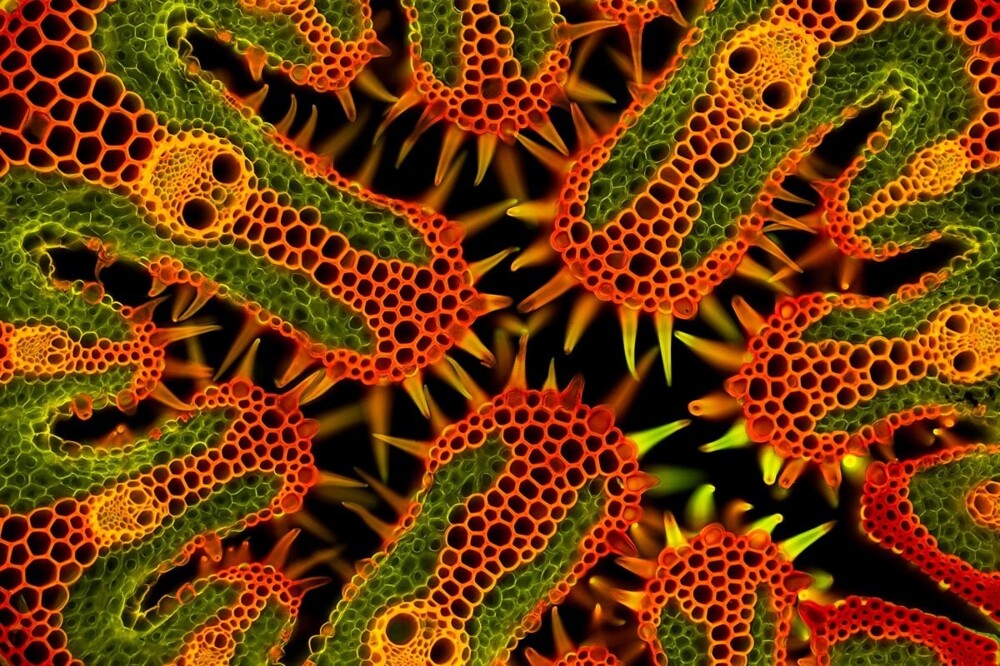
“This image shows a 30-μm-thick cross-section of beach grass (Ammophila arenaria) stained with auramine O and safranin and viewed under a fluorescence microscope (450 nm, blue excitation). The herb was taken from a garden in Vienna. To achieve the best results, I had to slice the sample as thin as possible. First I fixed some stems in warm liquid polyethylene glycol. As it cools, it becomes hard and the embedded stems are placed in a microtome and cut with a sharp blade. Staining and sample preparation were very difficult. I had to use the smallest brush possible to manipulate the sub-1mm features in various stains and chemical solutions before placing the stems on the slide. After that, taking a photo became easier than ever!”
“Ice Fossil”, Piet Haaksma (Netherlands). Intimate landscape: 2nd place
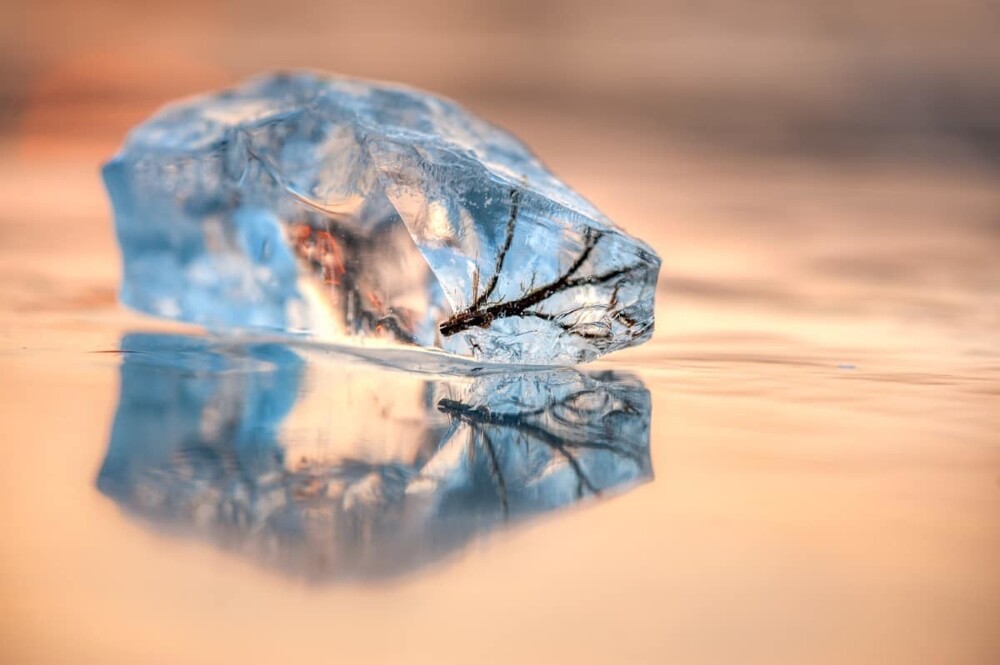
“In winter, you can go ice skating in many of the flooded wetlands in the Netherlands. The ice is often damaged and pieces break off. One day I found a small piece of ice with a piece of branch frozen into it, and it looked like a real prehistoric find.”
"Ice Crown", Barry Webb (UK). Mushrooms: 1st place

“This 1mm tall fungus (Didymiumquamulosum) was found in leaf litter on woodland soil in Buckinghamshire in January. Attracted by the way the frost had shaped the crown at the top of the fruiting body, I had to be very careful not to breathe on it. On a previous attempt with a different mushroom, my breath melted the ice when I accidentally got too close.”
“Heart of the Sea”, Liang Fu (China). Underwater world - 2nd place
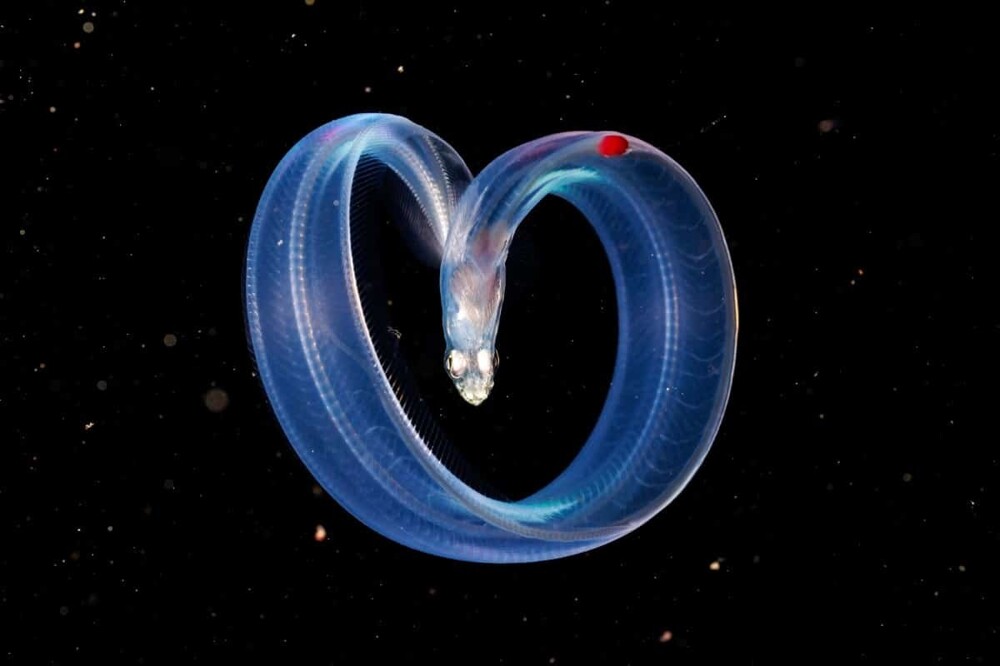
“This photo was taken during a black water dive in Romblon, Philippines. Blackwater diving is a form of scuba diving that occurs at night in the open ocean, thousands of meters below the boat. Divers rappel down using only underwater lights for orientation. When the tides and moon phases are right, creatures from the deep migrate to shallow waters. This vertical migration is one of the most remarkable natural phenomena. During the dive, I saw something glowing under the spotlight at a depth of 28 meters. Swimming closer, I discovered a lava moray eel curled into a heart shape. I was very lucky to capture this moment with my camera. The moray remained at this depth for less than 10 seconds, and then swam down and disappeared into the darkness."
“Orange Isopod”, Manfred Auer (Austria). Portrait of an invertebrate: 2nd place
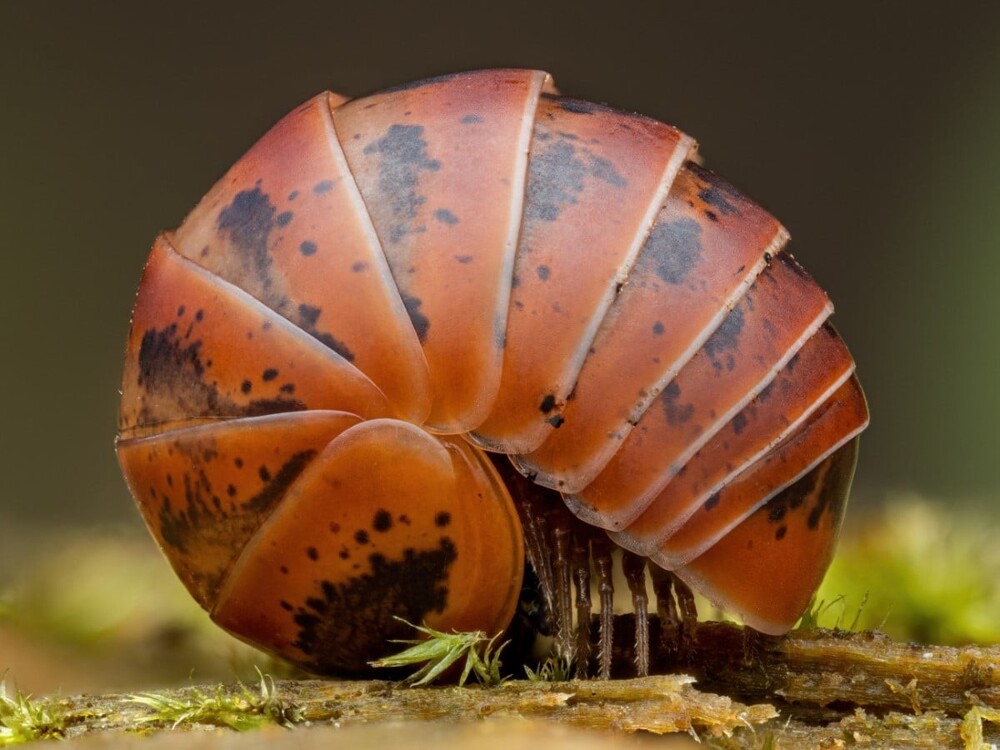
“I took this photo back in April when I started working as a macro photographer. Just three months after I received my Olympus camera, I came across this incredible isopod in the forest behind my house in the beautiful south of Austria. This image is the result of combining 91 separate shots with different focus points."
“Tears in Our Eyes”, Wim Voys (Netherlands). Plants: 2nd place
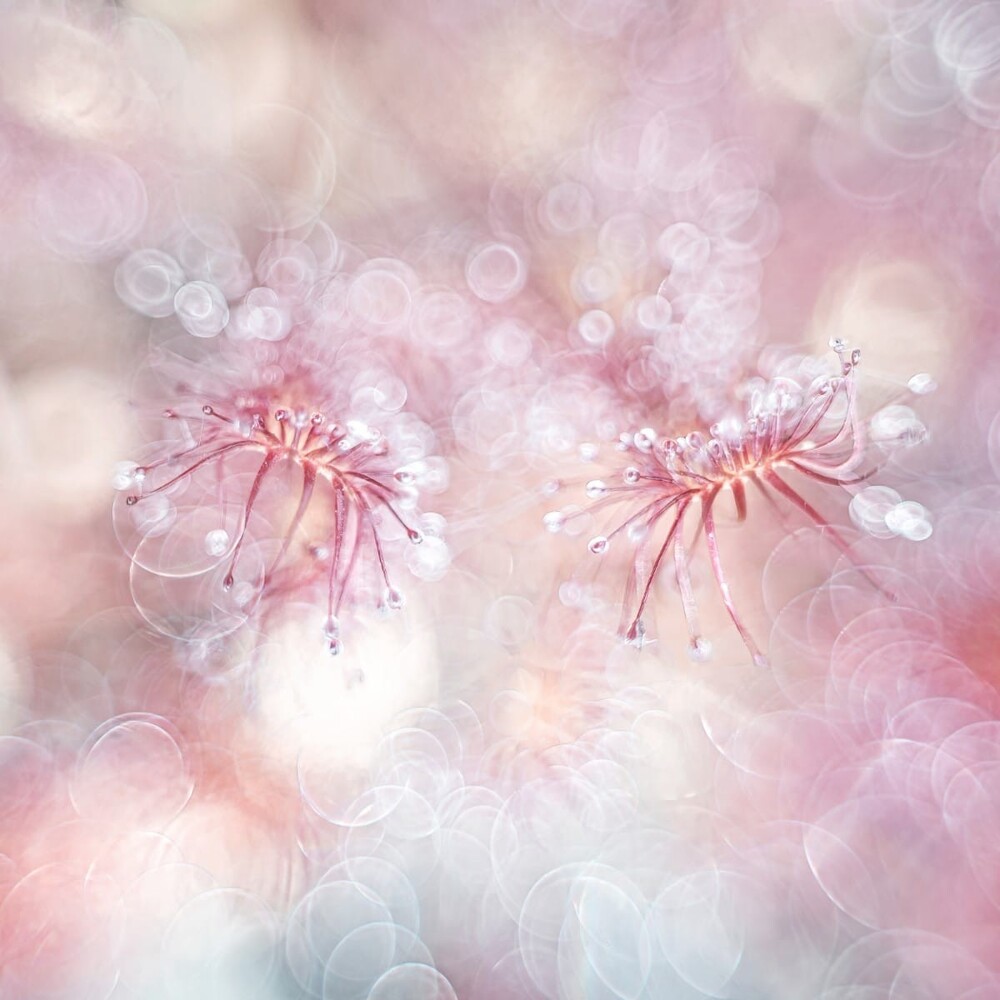
“I discovered a field covered with sundews, a small carnivorous plant. There were many blue butterflies with silver spikes flying around, and sometimes one of them got caught in the sundew. Rather than photograph one of these poor victims, I took a different approach. I wanted to capture the innocent and alluring beauty of the plant, as a butterfly might see it in its final moments. For this, I used a vintage Pentacon lens to capture the sundew as a pair of eyelashes on the seductive eyes"
“The Spirit of Yucatan”, Chris Gag (USA). Plants: finalist

"Looking through drifting lily pads in a Mexican freshwater cenote to the sky above."
“Twisted Dandelion”, Harald Söderlund (Sweden). Microworld: 3rd place

“This photograph of a dandelion found on my lawn was taken using a Mitutoyo10x microscope lens fitted to a camera with a 70-200mm f/4 lens as a tube. Using motorized macro rails, I took about 200 individual exposures, which were combined into a Zerene Stacker to create the final image. I often use this setup to poke around inside dandelions. Using ambient light from a window to illuminate the dandelion from behind creates a beautiful rim light, improves contrast and makes the dandelion 'shine'.”
“Comatricha Nigra”, Alexis Tinker-Tsavalas (Greece/Canada). Young photographer: 2nd place

“After finding a large patch of slime mold fruiting bodies under a log, I checked them regularly over several days until they reached a stage where they could be photographed. After trying different angles and compositions, I chose this perfectly organized small group and took a focus stack to bring them all into focus."
"Picking Flowers" by William Steele (South Africa/UK). Animals: finalist
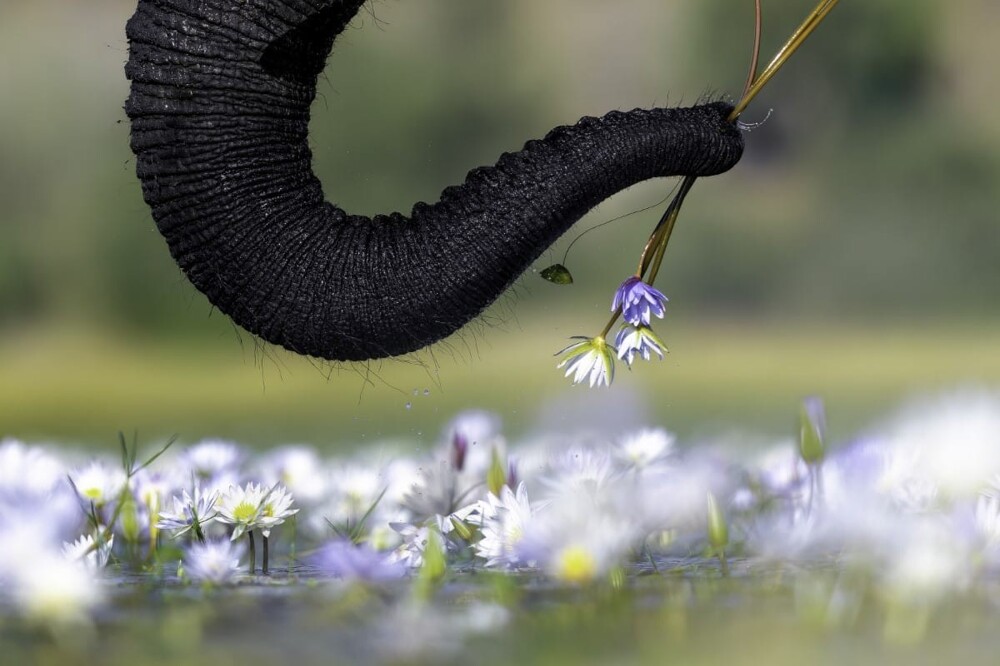
“An elephant enjoying a meal of water lily flowers while crossing the Chobe River in Botswana. When floodwaters reach the Chobe River (all the way from its origin in Angola), the waterways are transformed, covered in a wave of colors. In 2023, I witnessed one of the most incredible spectacles of such flowering. I can only assume that the combination of early, gradual flooding and large volumes of water meant we saw a lush carpet of white and purple flowers. Since elephants and buffaloes passed through this area from time to time, I knew it was just a matter of persistence. One afternoon, the combination of perfect lighting, a thick patch of flowers, and a flower-hungry elephant made the perfect combination. By shooting from the boat and leaning over the edge so that the lens was almost touching the river, I was able to get a low, intimate perspective. A once-in-a-lifetime moment!”
“The Wedding Guest”, Csaba Daroczy (Hungary). Butterflies and dragonflies: 1st place
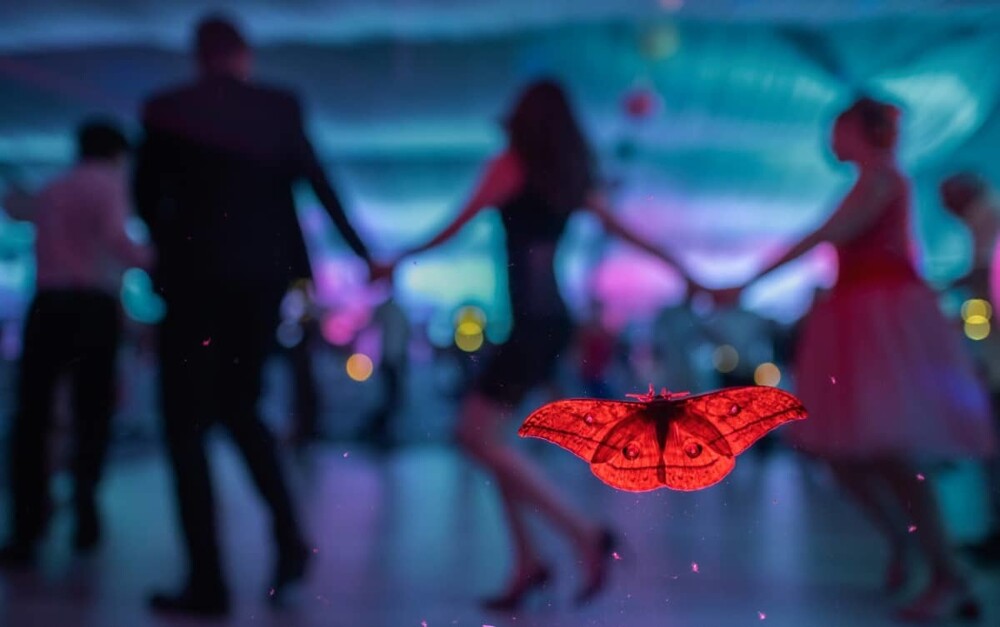
“I photographed a wedding in a forest clearing in the picturesque surroundings of Uzsa, Hungary. The light in the hall attracted many insects that rested on the windows. At one point, I saw guests taking pictures with their phones next to one of the red lanterns. As I got closer, I noticed that there was a Japanese oak peacock eye (Antheraea yamamai) perched on the window. I waited until everyone was done taking photos and then it was my turn.”
“The Coming of Autumn”, Jay Birmingham (UK). Mushrooms: 2nd place
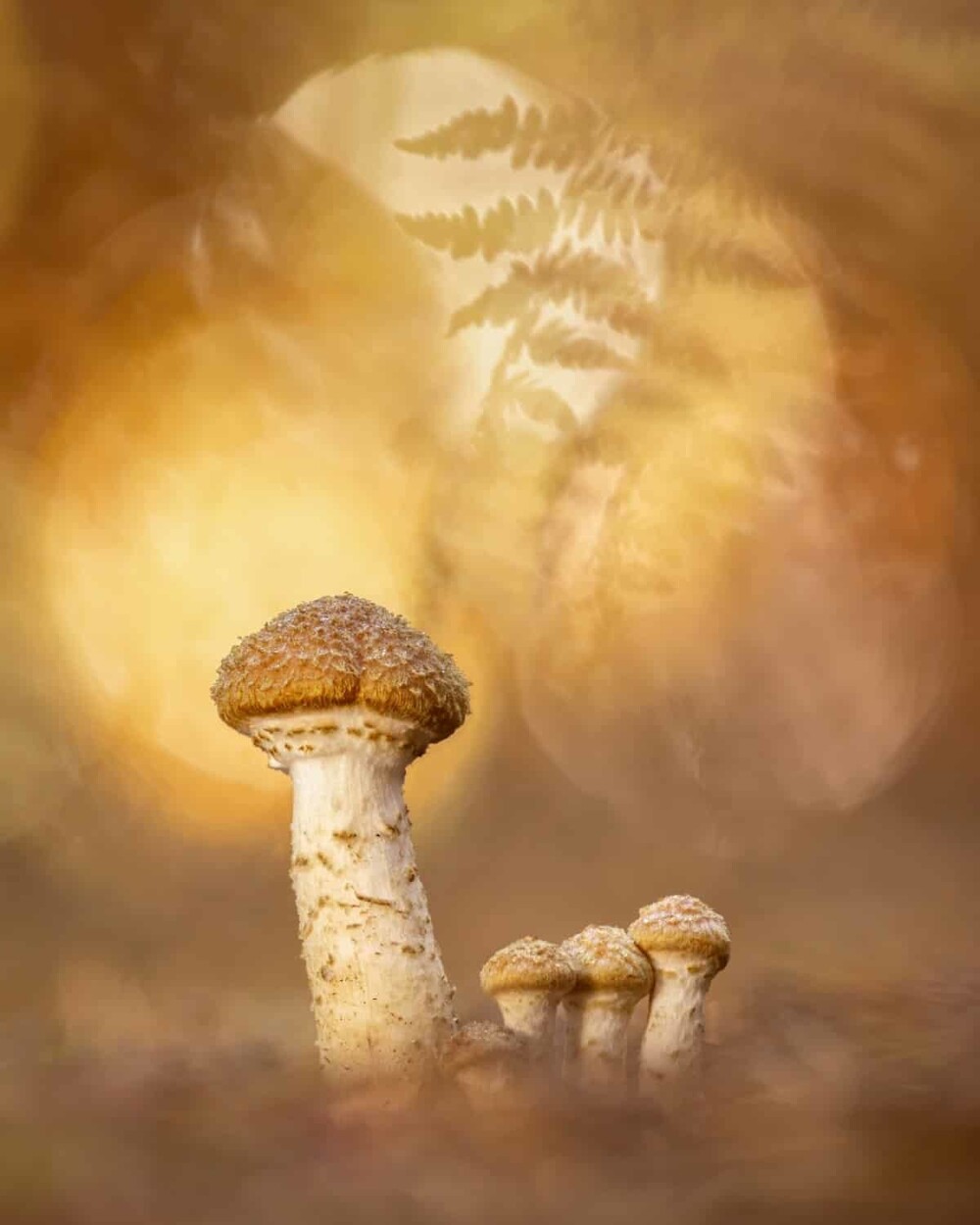
“I came across these honey mushrooms in our forest when the sun rose and illuminated the forest with golden hues. A bonus was the bracken, which gave the painting a surprisingly warm autumnal feel. I shot with a wide aperture to isolate the subject and maximize the bokeh effect.”
“Asymmetric Threads”, Elizabeth Kazda (USA). Man made: 1st place
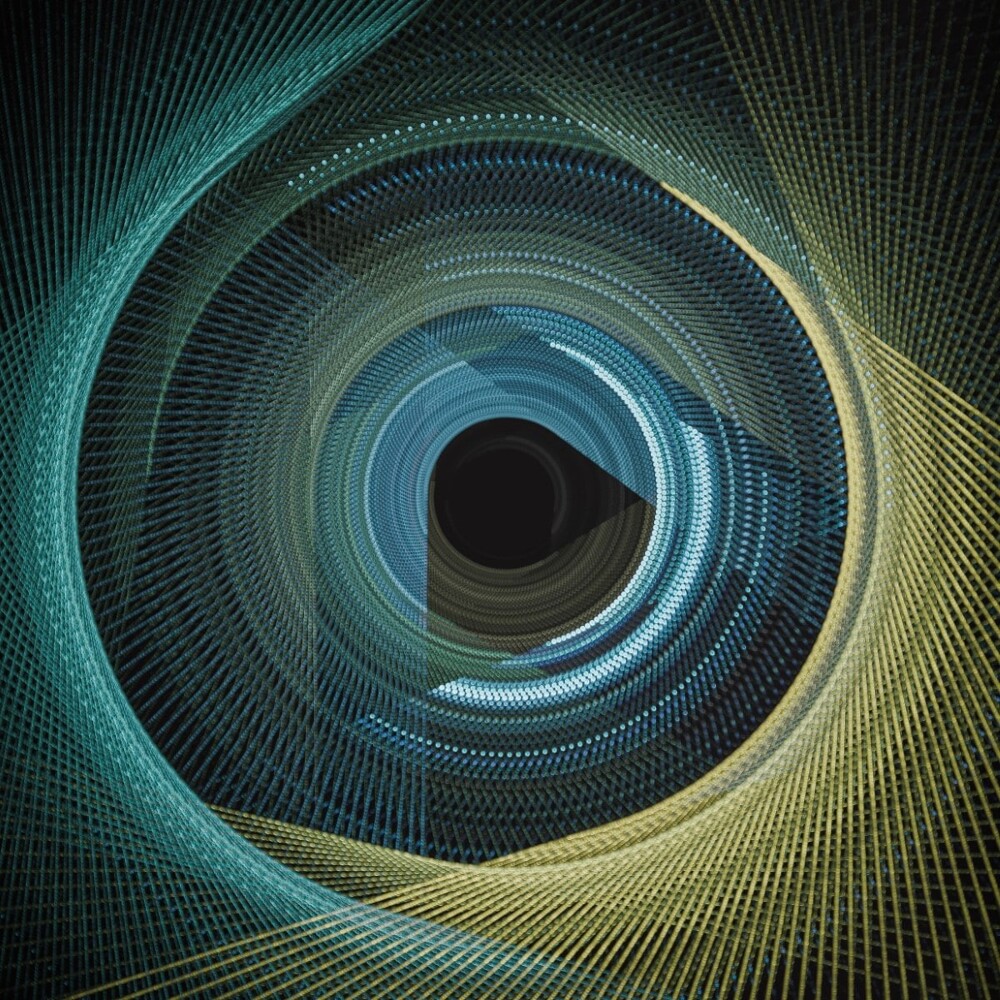
“I enjoy pushing the limits of my camera and experimenting with new techniques for capturing common subjects. My collection of craft supplies includes numerous spools of colored thread from previous projects. I wanted to photograph this thread in an unusual way, and came up with the idea of wrapping colored strands around an open photo frame. I placed the frame on the motorized rotating platform and set the camera to multiple exposure mode. I took 64 photographs of the thread at 64 equidistant positions while rotating the platform. Since I did not perform a 360° rotation, the design turned out to be asymmetrical. This is a painstaking process that requires patience. For this image, I used the camera's built-in 64-frame multiple exposure to output a single Raw file."
“Raft of Mosquito Eggs”, Barry Webb (UK). Insects: 2nd place
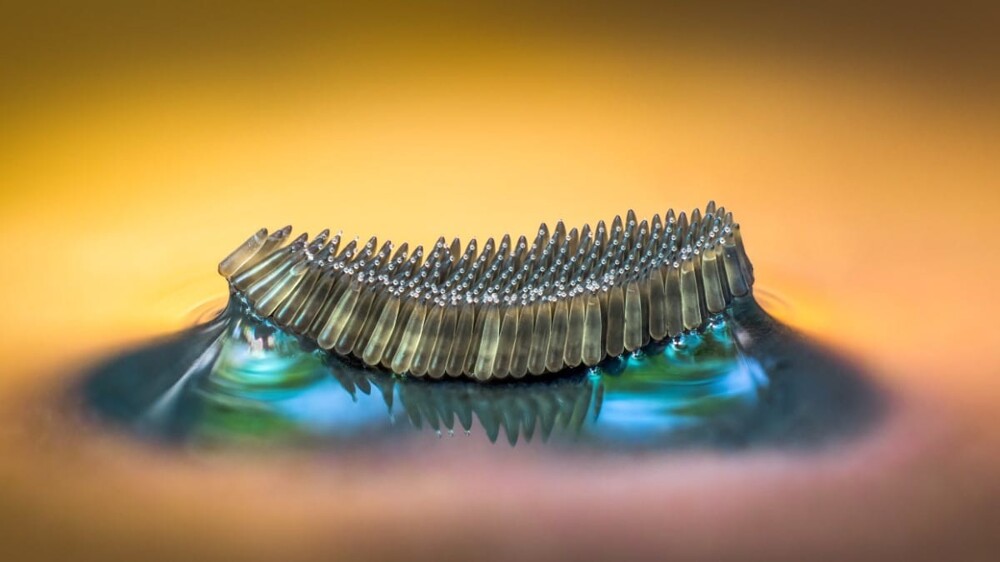
“I noticed dozens of these tiny mosquito eggs on the surface of a water barrel when I was working as a gardener. The egg rafts couldn't stay in place long enough for me to photograph them. So I carefully fished out one of the rafts using a teaspoon and placed it in an upside down bottle filled with water. He placed a pebble in the center of the neck of the bottle and then carefully pushed the raft over it to keep it stationary. After photographing, all the eggs were returned to the barrel of water.”
“By the Pool”, Nicolas Destefano (Italy). Insects: finalist
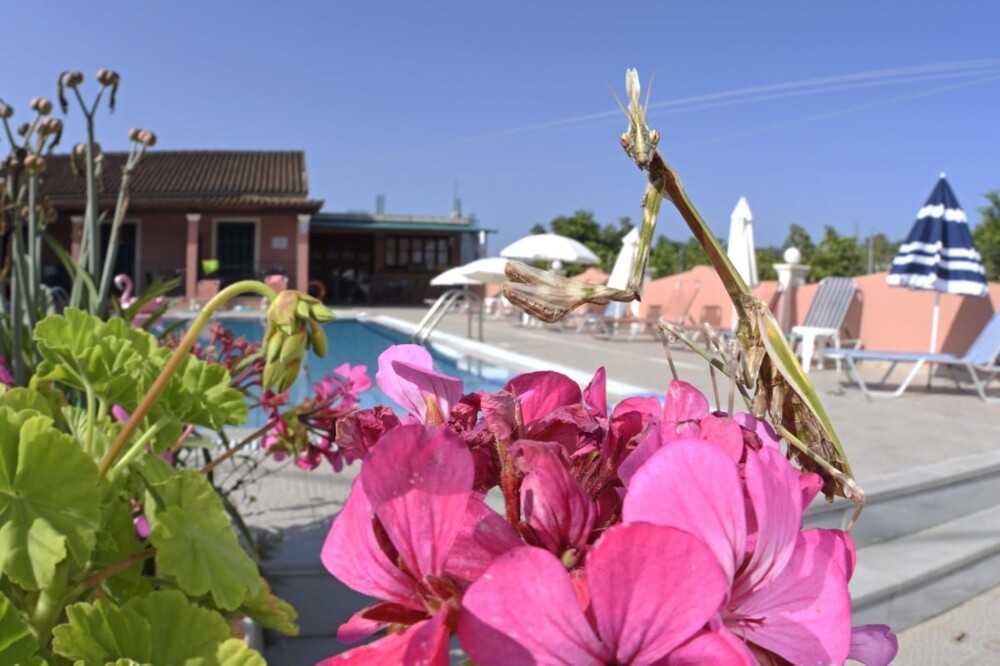
“Last summer I spent several days on the island of Corfu. One afternoon on the hotel grounds, I spotted a praying mantis sunbathing by the pool. I grabbed my camera (which is always ready) and took a few photos of this unusual scene.”
“After Mating”, Steve Russell (USA). Butterflies and dragonflies: 2nd place
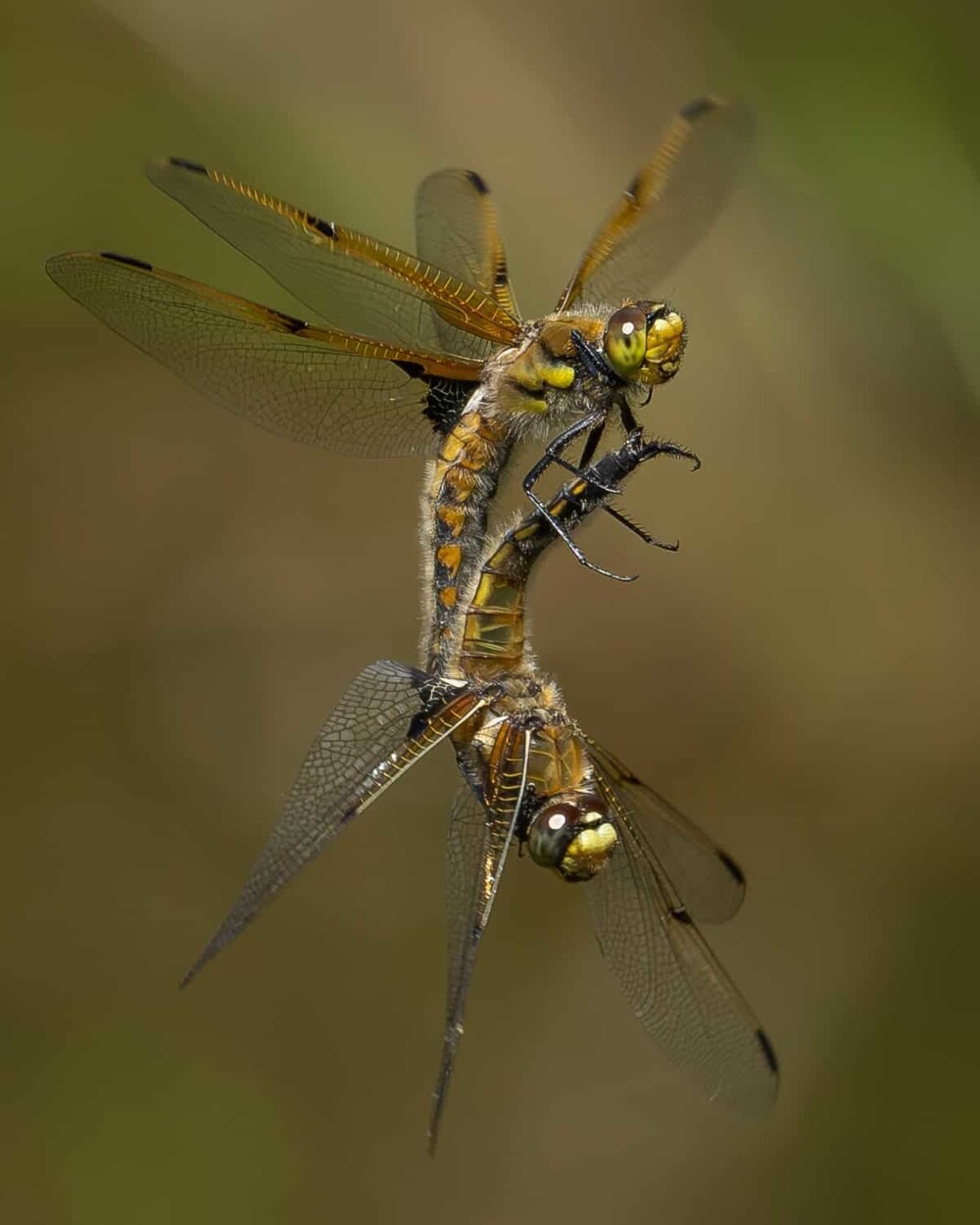
“Catching mating in four-spotted dragonflies (Libellula Quadrimaculata) is especially difficult because they connect and mate mid-flight without any warning and for only a few seconds. The moment captured in this photograph occurs just after the male has finished depositing his sperm on the female's eggs and they shut down. She will then try to lay eggs in the water, and he will hover next to her to ward off other males who will also want to mate with her.”
“Ferro Field” Jack Margerison (Great Britain). Man Made: 3rd place
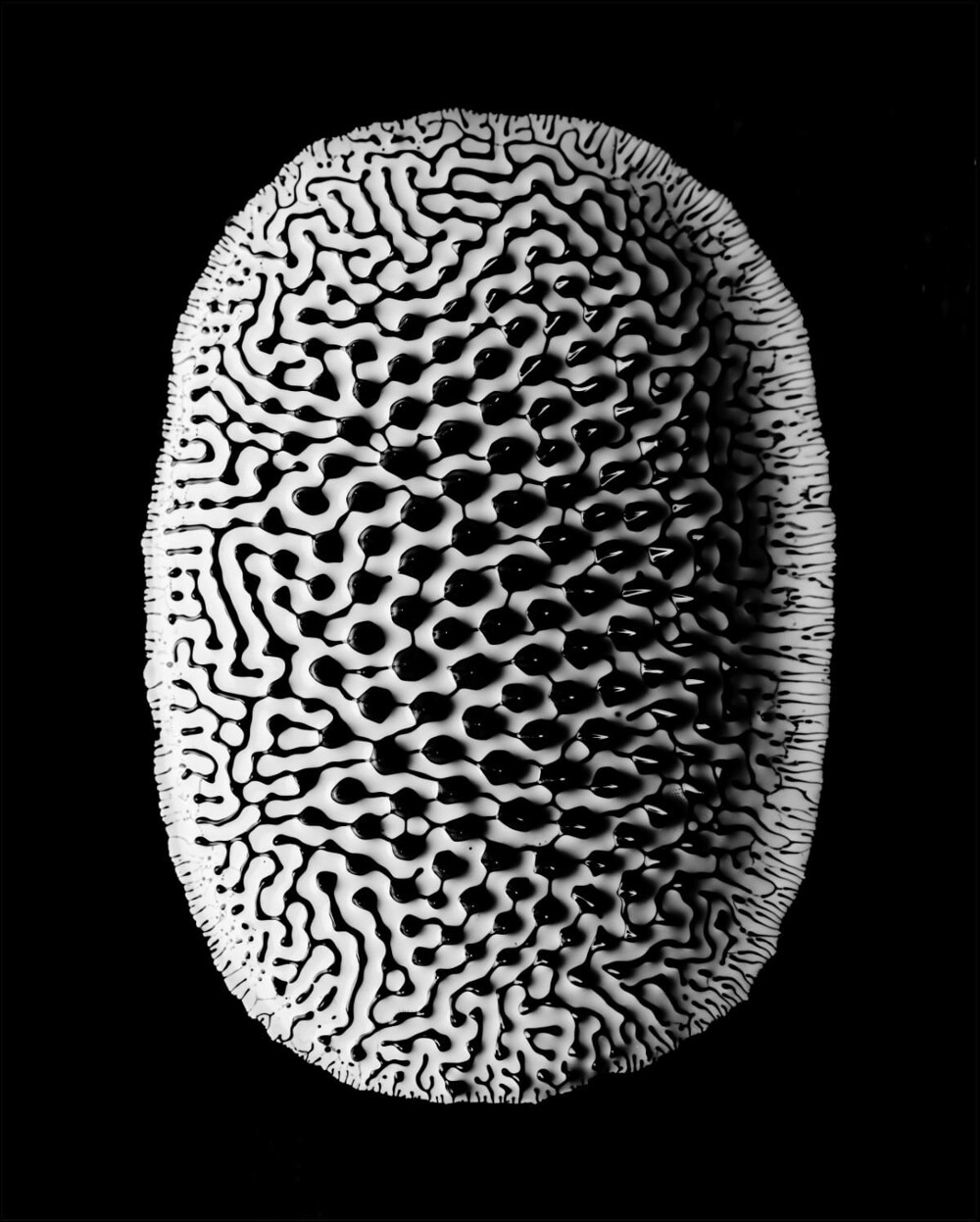
“During the Covid lockdown in the UK, we found ourselves locked in our homes for long periods of time. To keep my creativity flowing, I started creating tiny pieces of art that I shot using different lighting and techniques. This part was made using black foam as a base, onto which I poured ferrofluid. A powerful magnet below created a pattern. Then I used an eyedropper to add pink paint before turning the photo into black and white.”
“Wood ants defending their home”, Rene Krekels (Netherlands). Insects: 1st place

“I was studying the lifestyle of wood ants in the Netherlands for work when I noticed that the ants defending a very large ant nest seemed intent on scaring me off by spraying acid in my direction. This gave me the perfect opportunity to photograph them in action."
“Ebb Tide”, Csaba Daroczy (Hungary). Intimate landscape: 1st place
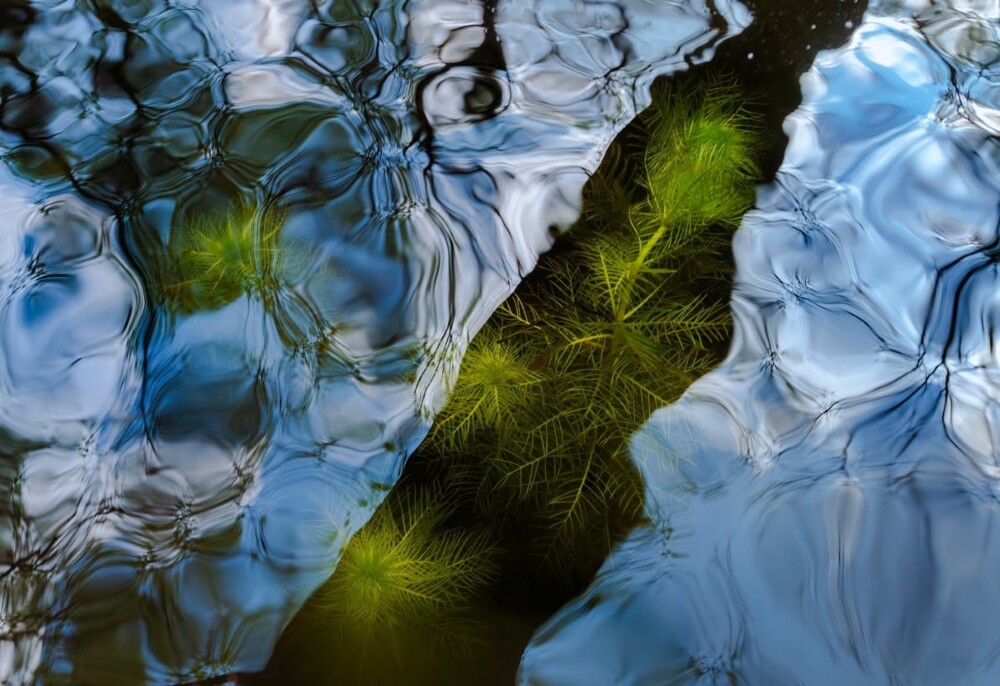
“In early May, I always return to a small canal near Izsak in Hungary, where the water violet (Hottonia palustris) blooms in huge quantities. Unfortunately, this year the flowering was delayed and only the leaves remained under water. I was about to go home when I saw that a tree had fallen over the canal, and under its reflection the plants were clearly visible. I found the topic very interesting and played with it for a while.”
“Jumping Stick”, Tibor Molnar (USA). Portrait of an invertebrate: 1st place

“When we traveled to Ecuador, I knew there would be an opportunity to see jumping sticks (Stiphra) in the Amazon region. When we found the first of several creatures, I was beside myself with excitement. I had been imagining this shot for a long time and it was incredible to be able to bring it to life. The best way to describe these invertebrates is that they are part stick insect and part grasshopper! When they jump, they are not particularly graceful and often lose their balance and tumble.”
